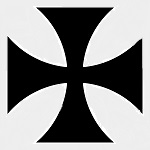Wings of the Great War WW11002 German Pfalz D.IIIa Biplane Fighter - Jakob Pollinger, Jasta 77b, 1918 (1:72 Scale)
"The important thing in aeroplanes is that they shall be speedy."
- Baron Manfred Von Richthofen
 The Pfalz D.III was a fighter aircraft used by the Luftstreitkrfte (Imperial German Air Service) during the First World War. The D.III was the first major original design from Pfalz Flugzeugwerke. Though generally considered inferior to contemporary Albatros and Fokker fighters, the D.III was widely used by the Jagdstaffeln from the fall of 1917 through the summer of 1918. It continued to serve as a training aircraft until the end of the war.
The Pfalz D.III was a fighter aircraft used by the Luftstreitkrfte (Imperial German Air Service) during the First World War. The D.III was the first major original design from Pfalz Flugzeugwerke. Though generally considered inferior to contemporary Albatros and Fokker fighters, the D.III was widely used by the Jagdstaffeln from the fall of 1917 through the summer of 1918. It continued to serve as a training aircraft until the end of the war.
Prior to World War I, Pfalz Flugzeugwerke produced Morane-Saulnier monoplane designs under license. These aircraft entered military service as the Pfalz A- and E-series. In September 1916, Pfalz began producing the first of 20 Roland D.I and 200 Roland D.II fighters under license.
In November 1916, Pfalz hired Rudolph Gehringer from Flugzeugbau Friedrichshafen GmbH. As Pfalzs new chief engineer, Gehringer immediately commenced work on an original fighter design. The resulting D.III emerged in April 1917. Like the Rolands, the D.III used a plywood monocoque fuselage. Two layers of thin plywood strips were placed over a mold to form one half of a fuselage shell. The fuselage halves were then glued together, covered with a layer of fabric, and doped. This Wickelrumpf method gave the fuselage great strength, light weight, and smooth contours compared to conventional construction techniques. However, it also proved to be more labor intensive and expensive. Furthermore, the D.III fuselage was prone to twisting or warping from side to side as it aged, a defect variously attributed to the use of insufficiently seasoned wood or to moisture absorption in damp conditions.
The wings were of conventional construction, with a flush Teves und Braun radiator offset to the right side of the upper wing. The ailerons were of wooden construction, rather than the more conventional steel tube construction. The horizontal stabilizer had an inverted airfoil section, which facilitated dive recovery and permitted the use of an unbalanced elevator.
The Idflieg found the prototype promising. It directed Pfalz to halt production of the Roland D.III and to complete the balance of the contract, 70 aircraft, to the new design. After a Typenprfung (type test) at Adlershof in May, the Idflieg ordered various modifications, including an enlarged rudder and horn-balanced ailerons. In June 1917, Pfalz received a second order for 300 aircraft
Pictured here is a 1:72 scale replica of a German Pfalz D.IIIa Biplane Fighter that was piloted by Jakob Pollinger, wha was attached to Jasta 77b during 1918.
Sold Out!
Dimensions:
Length: 4-inches
Wingspan: 5-inches
Release Date: March 2015





 German Pfalz
German Pfalz 


